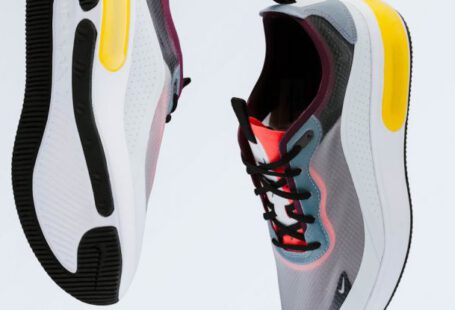Virtual reality (VR) technology has been making waves across various industries, revolutionizing the way we experience entertainment, gaming, education, and even shopping. As the technology continues to evolve and become more accessible, the question arises: Is virtual reality ready for mainstream shopping?
The Rise of Virtual Shopping Experiences
Virtual reality has the potential to redefine the shopping experience by offering consumers the opportunity to browse products and make purchases from the comfort of their own homes. With the rise of e-commerce platforms and the increasing demand for convenience, virtual shopping experiences have gained traction in recent years.
Immersive Retail Environments
One of the key advantages of virtual reality in shopping is the ability to create immersive retail environments that mimic the physical shopping experience. Virtual reality allows customers to explore virtual stores, interact with products, and even try them on virtually, providing a more engaging and personalized shopping experience.
Enhanced Product Visualization
Virtual reality technology enables retailers to showcase their products in a more interactive and engaging way. By using VR, customers can view products from different angles, zoom in to see details, and even visualize how items would look in real-life settings. This enhanced product visualization can help bridge the gap between online and in-store shopping experiences.
Virtual Fitting Rooms
One of the most exciting applications of virtual reality in shopping is the concept of virtual fitting rooms. By using VR technology, customers can try on clothing and accessories virtually, eliminating the need to visit physical stores for fittings. Virtual fitting rooms not only save time and effort but also enhance the overall shopping experience by providing a more personalized and convenient solution.
The Future of Virtual Reality in Shopping
While virtual reality holds immense potential for transforming the shopping experience, there are still some challenges that need to be addressed before it can fully integrate into mainstream shopping practices.
Technical Limitations
One of the main obstacles to the widespread adoption of virtual reality in shopping is the technical limitations of VR technology. Issues such as headset comfort, resolution quality, and motion sickness can hinder the seamless integration of VR shopping experiences. As technology continues to advance, these challenges are expected to be overcome, making virtual shopping more accessible and user-friendly.
Cost Considerations
Another barrier to the mainstream adoption of virtual reality in shopping is the cost associated with VR hardware and software. While the prices of VR devices have been decreasing over the years, they may still be out of reach for some consumers. Retailers will need to find ways to make virtual shopping experiences more affordable and accessible to a wider audience.
Consumer Acceptance
The success of virtual reality in shopping ultimately depends on consumer acceptance and willingness to embrace this technology as a part of their shopping routine. While younger generations may be more open to adopting VR shopping experiences, older demographics may be more hesitant or reluctant to try new technologies. Retailers will need to educate consumers about the benefits of virtual shopping and address any concerns or reservations they may have.
The Road Ahead for Virtual Reality Shopping
Despite the challenges that virtual reality faces in becoming a mainstream shopping tool, the potential benefits it offers are undeniable. As technology continues to advance and become more sophisticated, virtual reality is poised to revolutionize the way we shop, providing a more immersive, interactive, and personalized shopping experience for consumers worldwide. Retailers that embrace VR technology and adapt to changing consumer preferences are likely to stay ahead of the curve and shape the future of shopping in the digital age.





